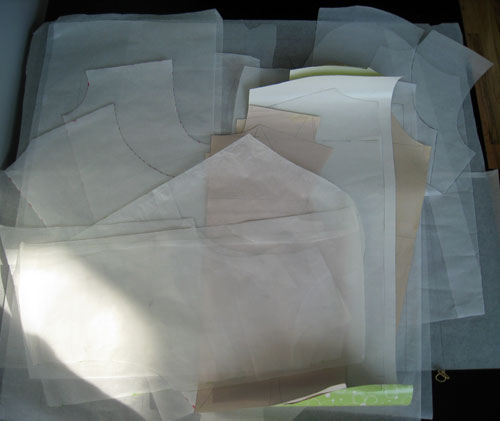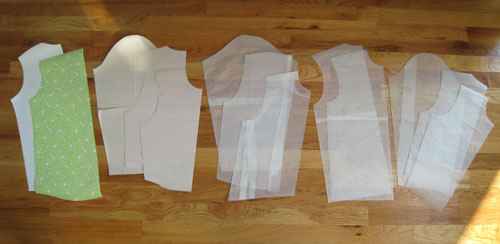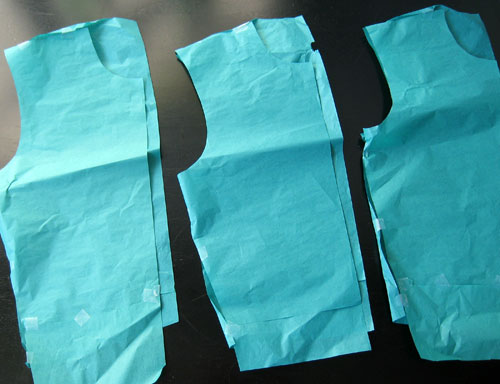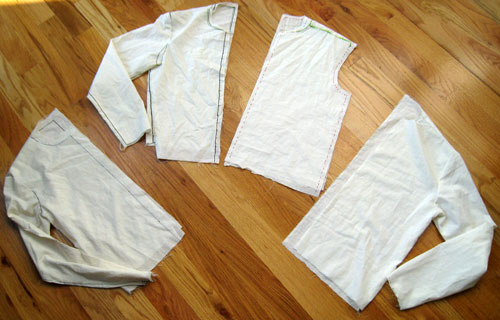Men’s Shirt Sloper

Um…yeah…that’s a lot of paper.
During the past few weeks I have accumulated this mass of paper in my attempt to draft a men’s shirt sloper. I have drawn, adjusted, and redrawn this pattern too many times to count. Compared to my jeans sloper, which came together relatively quickly, this shirt sloper is taking quite a bit longer than I expected. I started with the same book I used for my jeans, The Practical Guide to Patternmaking for Fashion Designers: Menswear by Lori A. Knowles. This taught me the basic shapes for the front piece, back piece, and sleeve, but I had some fit issues with this initial pattern.
Trying to draw a pattern on a flat piece of paper that allows for the way the arm moves relative to the body is more complicated than I previously thought. I started making some changes on my own, and while I got somewhat close to what I was looking for, the sloper still wasn’t perfect and certainly wasn’t ready for me to use to begin making shirt patterns.
Instead of continuing with blind trial and error, I decided to save some paper (and my sanity) and got some help from a wonderful sewing/pattern making teacher here in Nashville. She was able to help me with some of my fit issues and as a result, I finally have an upper body sloper that fits really well. I still need to add a bit of ease across the chest and shoulders in the back, but for the most part I am almost finished with the shirt sloper.

I ended up with three or four different variations.

I tested the fit of the front and back in tissue prior to cutting out the pieces in muslin. Tissue is not the best way to gauge whether the pieces fit correctly, but I wanted to see if they were roughly the correct shape.

Once I determined that I was on the right track with the tissue test fit, I cut out each version of the pattern in muslin to give me an idea of how the sloper would fit using fabric. This also gave me a chance to see how the sleeve interacted with the front and back pieces. Each version was progressively better than the previous version. Since I wasn’t sure how the pattern would fit, I only cut out half of the sloper each time I tested it. As soon as I add some ease to the latest version, I will test the whole upper body at the same time, which is really the only way to make sure the sloper fits exactly how I want it to.


Finding mens patternmaking information has turned out to be quite difficult. I need to radically enlarge a doublet pattern at the hips to go over a fat suit. And without darts in the bodice per my (long ago) lessons, it’s not so straight forward. Of course, I could be making it much harder than it should be. Anyway, it was a relief to find someone else testing men’s slopers!